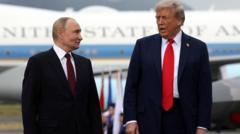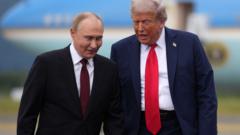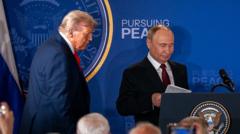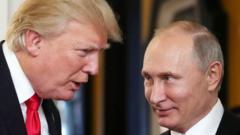With dwindling time before the US trade deadline, negotiations between India and the US are bogged down by significant disagreements over agricultural access and tariffs. Despite a hopeful tone, experts warn that both nations may need to settle for a more limited agreement than originally envisioned.
Will the India-US Trade Negotiations Result in a Compromise?
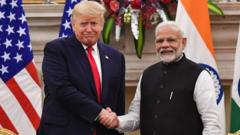
Will the India-US Trade Negotiations Result in a Compromise?
As critical trade discussions progress, key points of contention threaten to derail a landmark agreement between India and the United States.
As the clock ticks down to the looming deadline on 9 July for a potentially transformative trade agreement between India and the United States, the optimism surrounding the negotiations is being overshadowed by escalating tensions over several contentious issues. Although US President Donald Trump projected confidence when discussing a forthcoming deal, and Indian Finance Minister Nirmala Sitharaman echoed similar sentiments, the reality of the discussions remains fraught with disagreement, particularly regarding agricultural trade policies.
The focus of contention lies prominently in demands for expanded US access to the Indian agricultural market. The US perceives India's farming sector as rich with untapped opportunities, seeking to gain ground with exports of crops such as corn and soybeans. However, India stands firm on its defensive agricultural measures aimed at safeguarding its farmers' livelihoods and ensuring food security for its vast population.
Trade experts, including Richard Rossow from the Center for Strategic and International Studies, highlight the crucial challenges surrounding access to Indian agriculture, indicating that ingrained protections for local farmers will be difficult to negotiate away. He emphasizes that while the US seeks to diminish non-tariff barriers, India's increasing regulatory measures, especially quality control initiatives, hinder market entry for foreign products.
Despite the challenges, Indian trade representatives are extending their discussions in Washington in hope of brokering a deal. However, the Indian government's strong stance on maintaining protective measures for dairy and staple crops could limit the scope of any negotiated terms.
Reports suggest that India’s current agricultural exports to the US touch approximately $8 billion, a modest figure compared to potential trade growth. Experts fear that if concessions are made by India, it could jeopardize vital agricultural protections like minimum support prices, which buffer farmers from volatile price swings.
While an informal proposal from Niti Aayog hints at a willingness to negotiate tariffs on select American agricultural imports, skepticism abounds regarding whether these discussions will lead to substantive policy changes.
Looking ahead, analysts indicate that the most feasible outcome may be a limited or “mini-deal,” focusing primarily on tariff reductions for industrial goods and strategic commitments from both countries. Promising negotiations could pave the way for future agreements in broader areas of trade, including technology and digital commerce.
As the negotiations continue, the global community watches closely, aware that outcomes could significantly impact both countries' economies and the precarious dynamics of international trade. Should these talks falter, experts predict that Trump may avoid reimposing hefty tariffs on Indian products, adopting a strategy that maintains some flexibility.

